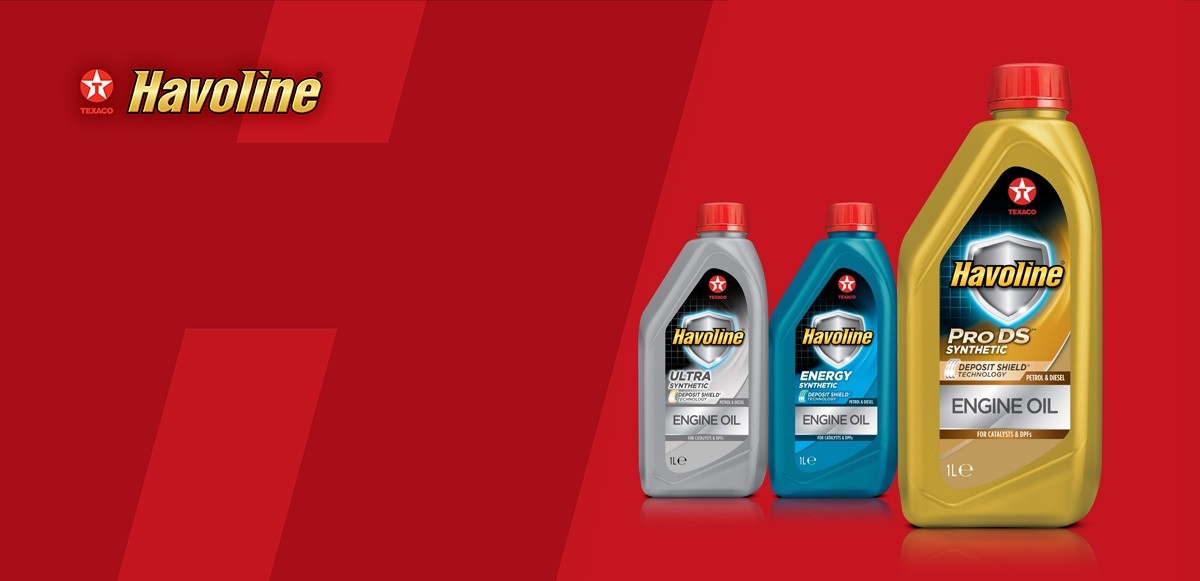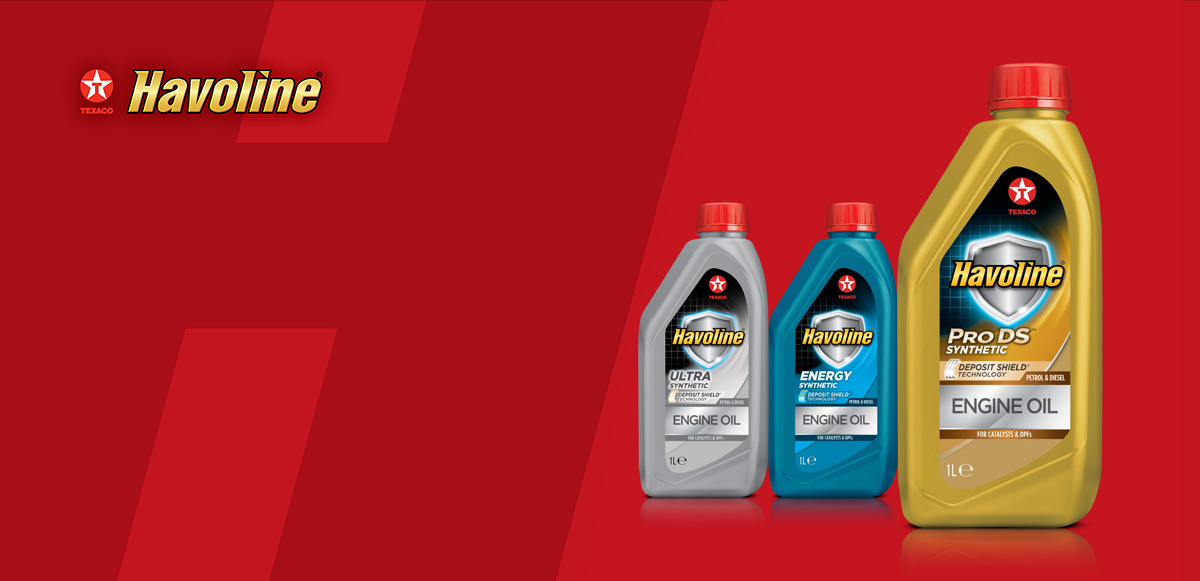Havoline Oils – Part Three


Lubricants are constantly evolving to fit the requirements of modern engines. Texaco Product & Technology Support Chemist, Rudi Sanders, takes us forward into the future to look at how lubricant technology is changing.
In Europe, we are moving towards lower viscosity grades, but many of the viscosity grades sold in the European market are still SAE 5W-40, 10W-40 and 15W-40 engine oils. Although most OEMs (Original Equipment Manufacturers) have introduced SAE 0W-20 viscosity grades with lower HTHS (High Temperature High Shear – which indicates the viscosity or resistance to flow of an engine lubricant) to maximise efficiency. The market share for this viscosity grade in the automotive market is still limited, but it is growing.
There have been many studies undertaken over the last few decades that have shown that there is a clear relationship between fuel consumption and the high shear rate viscosity at 150°C. This means that if the engine can cope with the low high shear rate viscosity, lower viscosity engine oils will contribute to lower fuel consumption.
It is important to highlight that lower viscosity engine oils with a high shear rate viscosity at 150°C of less than 2.9 cP cannot be used in many older engines. In these conditions, the engine oil will operate within a boundary lubrication regime, whereby the lubricant pressure is not enough to separate the surfaces or support the load applied. This will lead to excessive engine wear, and eventually engine seizure. Today, several OEMs are developing engines that can cope with engine oils with high shear rate viscosity at 150°C of 2.3 cP and lower.
What are the main lubricant trends in the passenger car segment?
There are five key market drivers, all closely related, pushing passenger car development and related manufacturer specifications in Europe. Four of them are triggered by current and upcoming legislation in connection with engine emissions, fuel economy, the use of alternative fuels and powertrains, and sustainability. The fifth, which is by no means the least important driver, is durability. Durability is required by both car manufacturers and end-users. All these drivers have a clear influence on the engine oils and lubrication systems of passenger cars.
Overall, the viscosity of engine oils has reduced, and continues to reduce to help provide better fuel economy. There is a growing demand for high performance low viscosity oils with clear fuel economy benefits.
In Europe, the viscosity grades in oil specifications are mainly limited to 0W-20 due to the oil specification requirements of both petrol and diesel cars. However, several European and Japanese manufacturers are currently reviewing the introduction of 0W-16 and 0W-12 engine oil recommendations in Europe. The introduction of tougher legislation around fuel economy will likely lead to the development of even lower viscosity oils which may have limited backwards compatibility, which, in turn, will indirectly lead to greater use of higher quality base oils and additives.
Viscosity reduction and internal combustion engine redesign has been triggered by legislation within the European Union (EU) and has seen wear control and friction modification systems redesigned to cope with lower viscosity engine oils. Engine oils are now required to fulfil greater oxidation resistance, and as a result, it is becoming more critical and more complicated to select the optimum base oil and additives required by lower sulphated ash, phosphorous, and sulphur (SAPS) technology.
To meet EU emissions regulations, manufacturers have begun the process of redesigning internal combustion engines and have introduced different aftertreatment systems, including diesel particulate filters (DPFs) and gasoline particulate filters (GPFs), which are protected by low SAPS engine oils. Going forward, the demand for low SAPS engine oils will continue to grow.
The effects of climate change and concerns over the security of petrol and diesel supply has resulted in an increase in the use of alternative fuels such as biofuels, including biodiesel/diesel mixtures, ethanol/petrol mixtures, LPG, and LNG. Alternative fuels require engine oils with increased oxidation, as well as greater thermal and corrosion protection to fight against the effects of water ingress, increased formation of organic acids, and higher operating temperatures.
Internal combustion engines using hydrogen are currently under review. This may prompt the lubricant industry to develop products that can cope with increased water ingress and reactivity to hydrogen. Alternative fuels will also influence the volume of engine oil needed.
In the forseeable future, it is likely that engines will be required to deliver fuel economy performance throughout their life cycle, and not just when they are fresh. On top of this, low SAPS additives, based on new additive technologies, in high quality base fluids will be required to cope with the introduction of new aftertreatment systems and engine designs. The upcoming EU legislation about sustainability, carbon neutrality and life cycle assessment will likely force the industry to introduce new alternative additive technologies in high quality base fluids, and possibly re-refined base oils.
Different manufacturers are currently growing further and further apart in their specifications, leading to the need for one oil per specification. This, unfortunately, leads to more segmentation and complexity for customers. In addition, more formulations are only being approved on one type of base oil, increasing the complexity at blending plants.
The enhanced complexity does have some clear consequences: more resource will be needed to develop the correct engine oils; higher inventory costs; increased blending time; and higher energy usage and wastage.
Currently, what are the main considerations when developing new oil products?
There are many things to take into consideration when developing a new engine oil,. First, we have to identify the industry and OEM specification requirements and compare this to the application in which the engine oil will be used. From a commercial perspective, we also need to evaluate whether there is market demand for the product that we are developing.
We also look to optimise the product slate to ensure that we cover as many specifications as possible with as few products as possible. This is to keep costs as low as possible for the market and the engine oil supplier.
Ultimately, we must consider current and upcoming legislation related to the use of engine oil components – such as base oils and additives – and the engine oil itself. For the latter, we must take a great deal into account, including the use of re-refined base oil, chemical components that are not permitted for use in business-to-business and end-consumer products, acceptable environmental use, and waste production.
The conditions put in place by OEMs and the wider lubricant industry to cope with potential development limitations and their impacts must also be considered. For example, we need to reflect on how minor modifications made to these conditions can change the entire product development process.
Finally, we must be conscious of how much time we will need to select a technology platform, to test formulations in engines and potentially vehicles, and to obtain OEM approval.
Battery Electric Vehicles (BEVs) have no Internal Combustion Engine (ICE), so no engine oil is required. These vehicles typically don’t have a conventional transmission, unlike those powered by an ICE, since electric motors do not need to operate within a narrow range of rotational speeds. In BEVs, fluid requirements will relate to a reduction gearbox located at the driven wheels and for thermal management fluid for the motor or battery.































